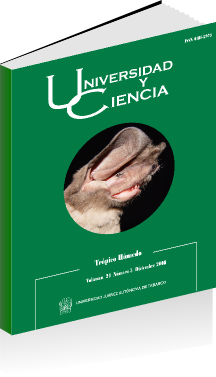QUALITATIVE STUDY OF PERCEPTIONS ON POVERTY AND PRESENT STATUS OF ASSETS IN A MAYAN COMMUNITY IN THE YUCATAN PENINSULA
DOI:
https://doi.org/10.19136/era.a24n3.255Keywords:
Poverty perceptions, assets, mayas, humid tropics, Yucatan.Abstract
The aim of this study is two fold. First, it explores the local discourse about poverty in a highly mar-ginalized municipality in the state of Yucatan, Mexico. Second, the study examines the present status of assets of 90 households through qualitative and quantitative techniques. The assessment was carried out using the Sustainable Livelihood Approach. The study concluded that the conditions of poverty in the households are closely linked to insti-tutional factors, rather than to economic factors. The most severe constraints observed in the homes of the community were the low productivity of the milpa system, the lack of livestock, a food deficit, low social capital, corruption and incorrect public policies. These problems may be addressed by a combination of local participatory policies focussed on the solution of the multiple factors that determine the poverty and marginalization in the community.Downloads
Downloads
Published
Issue
Section
License
Copyright (c) 2014 Ecosistemas y Recursos Agropecuarios

This work is licensed under a Creative Commons Attribution-NonCommercial-ShareAlike 4.0 International License.
Aviso de copyright
Los autores que se envían a esta revista aceptan los siguientes términos:
una. Los autores conservan los derechos de autor y garantizan a la revista el derecho a ser la primera publicación del trabajo con una licencia de atribución de Creative Commons que permite a otros compartir el trabajo con un reconocimiento de la autoría del trabajo y la publicación inicial en esta revista.
B. Los autores pueden establecer acuerdos complementarios separados para la distribución no exclusiva de la versión del trabajo publicado en la revista (por ejemplo, en un repositorio institucional o publicarlo en un libro), con un reconocimiento de su publicación inicial en esta revista.
C. Se permite y se anima a los autores a difundir su trabajo electrónicamente (por ejemplo, en repositorios institucionales o en su propio sitio web) antes y durante el proceso de envío, ya que puede conducir a intercambios productivos, así como a una cita más temprana y más extensa del trabajo publicado. (Consulte El efecto del acceso abierto).

